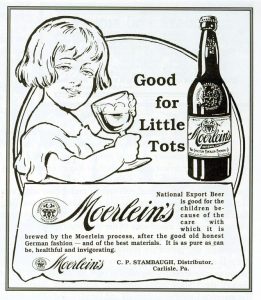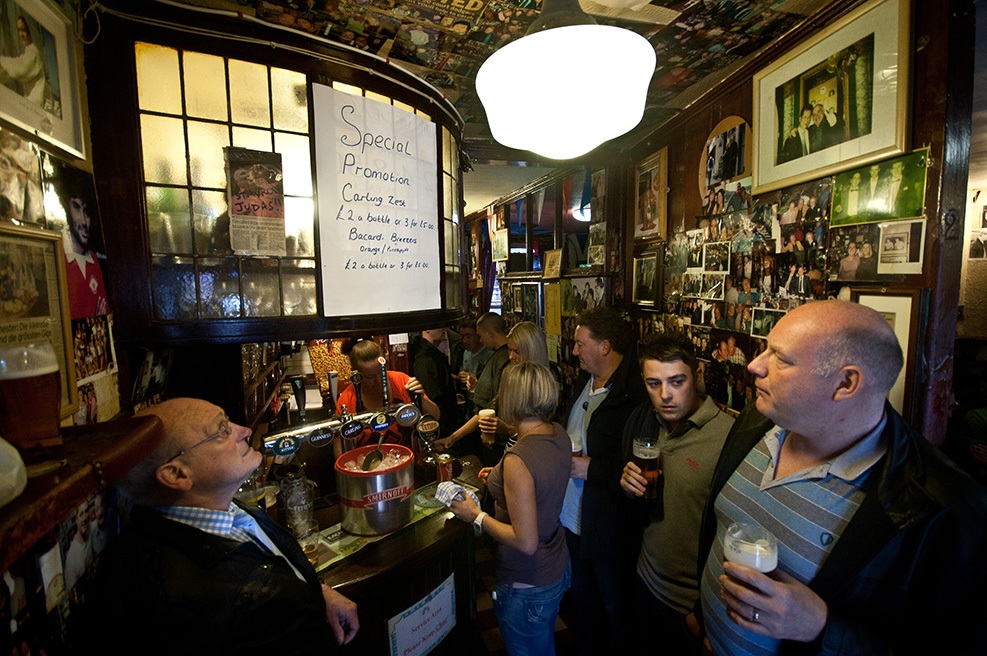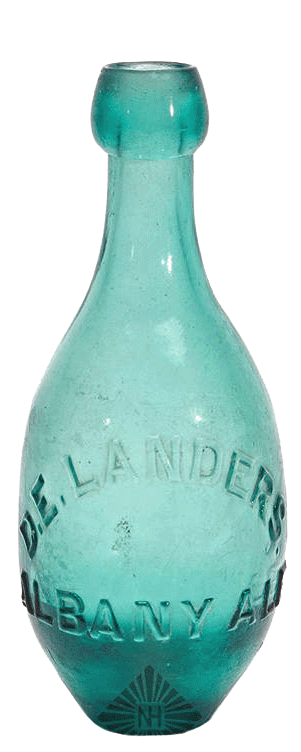A better week. Not a perfect week in any sense but a better week. Here in Ontario, more coming back to life. As of this Friday, where I live I can get a haircut, go to a church that is 30% full and hang out with ten people at a time. Things are moving forward. One key issue: should pubs still have a proper level of grot as they reopen? Hmm… And when Her Majesty the Queen told us “we will meet again” did she imagine it would be on asphalt in a parking lot?
Furthermore on the hereabouts, on Monday the AGCO announced the expansion for outdoor service on Monday, effective in most of Ontario this Friday. Toronto and the surrounding areas as still considered too much at risk and will open at a later date. The rules for creating a bigger outdoor area are interesting:
1. The physical extension of the premises is adjacent to the premises to which the licence to sell liquor applies;
2. The municipality in which the premises is situated has indicated it does not object to an extension;
3. The licensee is able to demonstrate sufficient control over the physical extension of the premises;
4. There is no condition on the liquor sales licence prohibiting a patio; and,
5. The capacity of any new patio, or extended patio space where the licensee has an existing licensed patio, does not exceed 1.11 square metres per person.
Even more interesting, those who meet the above criteria are not required to apply to the AGCO or pay a fee to temporarily extend their patio or add a temporary new licensed patio and they are not required to submit any documentation to the AGCO to demonstrate compliance with the above criteria. We aren’t in Kansas anymore, Toto.
Elsewhere, Boak and Bailey have celebrated another step towards liberation with the takeaway service at their local micropub being now a going concern:
…the reopening of The Drapers is definitely next level, game-changing stuff. Not necessarily because every single beer is utterly brilliant, but because [w]e suddenly have access to a range of cask beers, not just one at a time; [w]e don’t have to decide a week in advance what we want to drink, and we (probably) don’t need to worry about running out between deliveries[; and T]he range that’s been on offer so far includes things we would not have been able to get hold of easily. It also includes new-to-us beers that we wouldn’t have wanted to risk buying in bulk, on spec.*
Stonch tweeted about one of the pains in the neck he has to deal with as he moves to reopening:
The shysters trying to cash in hospitality operators’ anxiety about re-opening at the moment are something else. Steady trickle into the inbox offering weird, unscientific and unnecessary products and services in the name of “COVID-19 secure”. Fuck off, spivs.
The timing and rules for reopening in Britain remain murky at best but Mr. Protz celebrated one wonderful milestone, the return to brewing cask at Timothy Taylor’s:
We are incredibly chuffed to announce that today is the first day since lockdown that we have produced CASK!! Thank you so much to every single one of you for your support through this incredibly difficult period! Slowly but surely, we are getting there!
Katie wrote an excellent bit on the lockdown’s effect on small brewers… when they weren’t brewing including preserving, returning to home towns and this:
For the synth-aware, Adrian’s current kit (at the time of writing this) was his Eurorack, AKAI Pad controller, Yamaha mixer and Roland Boutiques SH-01, TR-09 and TB-03. If you fancy hearing his creations in action, find him on twitter at @wishbonebrewery.
Catching up elsewhere, Gary has been busy and I particularly liked this piece of his on a 1935 conference which added helpfully to the question of 1800s adjectives in North American beer labeling:
Rindelhardt stated that cream ale and lively ale, which he considered synonymous, were devised in the mid-1800s to compete with lager. He said they were ale barrelled before fermentation had completed to build up carbonation in the trade casks, or krausened in those casks, and sent out. In contrast, sparkling ale and present use ale – again synonymous – might also be krausened, and later force-carbonated, but were a flat stored ale blended with lager krausen. This form, provided the lager krausen was handled correctly, still offered an ale character but in a fizzy, chilled way as lager would offer.
“Cream ale” and “cream beer” are of special interest as careful readers will recall. Check out his thoughts on the revival of Molson Golden, which I can only pronounce as if I were from Moncton, New Brunswick.
Speaking of history, I was reading through Canadian artist Tom Thompson’s diaries of the summer he disappeared over a century ago and was struck by this:
June 7, 1917: I had a hell of a hangover this morning. The whisky we had yesterday hit me hard but at least I didn’t go blind. That happened numerous times after the Temperance Act went into effect and people started making their own alcohol Sometimes the alcohol wasn’t right and people would go blind drinking it.
Note that he did not say prohibition and indicated activities not akin to prohibition. Never really right to use the US term and apply it to the Canadian context.
Closer to the present, Jeff wrote about the great Bert Grant (and I added my two pieces in the cheap seats of Twitter replies), Canada’s true gift to craft beer:
The West Coast was divided into segments, and the cities of Portland and Seattle followed a parallel but separate track. The breweries there had their own founders and in one is a historical lacuna that explains a great deal about the influences that guided hoppy ales in the Pacific Northwest. That forgotten figure is Bert Grant, who left the hops business to start his own brewery in 1982 and whose first beers created an instant appetite, decades ahead of the rest of the country, for hoppy ales.
Read all three pieces as you only understand 1982 if you understand 1944.
Jordan celebrated a milestone, hitting a decade in the beer soaked life. What did he learn? “Soylent Green is people!!!” No… let’s check that… no, beer is people:
If you wanted to play around with ingredients, you’d be a home brewer. A professional brewer, by default, brews for someone else. One assumes that a professional brewer does that because they enjoy it. One assumes that they make a product they believe in to the best of their ability and share it with the world. One assumes they are mindful of all the collective effort that goes into that.
Speaking of home brewers, in 1973 the BBC sent the fabulous Fyfe Robertson in search of the perfect pint made in an English basement. Have I posted this before? If I have it’s worth a second look. Speaking of Auntie Beeb, Merryn linked to a BBC 4 story on bere barley in Orkney.
One last thing. I have seen a few calls from part time editors feeling adrift who are encouraging vulnerable beer writers to turn to them in exchange for the usual pittance and a scraping of your voice in exchange for theirs. Do not be fooled! This is the time for you to be you:
Beer writers! What have you wanted to cover that might not appeal to a mainstream site? An underreported subject that merits a quick dive? An aspect of beer culture that deserves a closer look? Get a blog!
[What is a “quick dive” anyway?]
There. A better week. Keep writing and reading and keeping up with the chin uppitry. Check in with Boak and Bailey most Saturdays, plus more at the OCBG Podcast on Tuesdays and sometimes on a Friday posts at The Fizz as well. And sign up for Katie’s weekly newsletter, too. Plus the venerable Full Pint podcast. And Fermentation Radio with Emma Inch. There’s the AfroBeerChick podcast as well! And have a look at Brewsround‘s take on the beer writing of the week. Not to mention Cabin Fever. Thanks for stopping by while not leaving the house. Except now you can leave your house a bit more. Do it!
*Edited only to make things as I wish they were.



 It’s a funny time of the seasons. Photos on social media from the mid-Atlantic and southern England definitely look like spring to me but it’s going to top out at -15C here on Friday. One last kick from the angry gods, just the one I hope. Hope. Oh… and just don’t fall for the matchy matchy beer and candy
It’s a funny time of the seasons. Photos on social media from the mid-Atlantic and southern England definitely look like spring to me but it’s going to top out at -15C here on Friday. One last kick from the angry gods, just the one I hope. Hope. Oh… and just don’t fall for the matchy matchy beer and candy 
 It’s not often that I get to headline the weekly update with something so.. so… unbeery – but is beer ever really that much removed from politics? Consider this photo to the right that
It’s not often that I get to headline the weekly update with something so.. so… unbeery – but is beer ever really that much removed from politics? Consider this photo to the right that  Barry in Germany posted an afternoon’s worth of photos of
Barry in Germany posted an afternoon’s worth of photos of 




 The last of birthdays, anniversaries and public holidays over the last four weeks has finally passed. And it has snowed. Wednesday was as sharp as deepest January at -16C even if it was +8C last Saturday. Five weeks before the solstice. So, I am buried in wool blankets at home this week, covered as soon as I get through the door, hugging the wood burning internet server looking for answers. Which is where I found the image above, from 1979 when
The last of birthdays, anniversaries and public holidays over the last four weeks has finally passed. And it has snowed. Wednesday was as sharp as deepest January at -16C even if it was +8C last Saturday. Five weeks before the solstice. So, I am buried in wool blankets at home this week, covered as soon as I get through the door, hugging the wood burning internet server looking for answers. Which is where I found the image above, from 1979 when  Perhaps somewhere in the middle, Boris Johnson has apparently failed to keep his word, this time related to staying out of the pub until Brexit is
Perhaps somewhere in the middle, Boris Johnson has apparently failed to keep his word, this time related to staying out of the pub until Brexit is 
